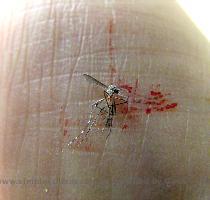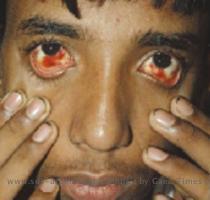Puerto Rico warns dengue outbreak may reach record as virus claims year’s 3rd local fatality
By David Mcfadden, APMonday, July 5, 2010
Dengue outbreak claims 3rd fatality in PR
SAN JUAN, Puerto Rico — Puerto Rico’s top health official warned Monday that the U.S. island could face its worst-ever dengue fever outbreak if people don’t act quickly to destroy breeding areas for disease-spreading mosquitoes.
Health Secretary Lorenzo Gonzalez Feliciano issued the warning after a 37-year-old woman from the northern town of Hatillo died of the hemorrhagic form of the tropical virus. Her death was the third fatality from dengue fever so far this year on the island.
Unless islanders take urgent measures to eradicate bug breeding areas by draining standing water near their houses, the Caribbean territory will experience a public health crisis in coming months, Gonzalez said.
“If we do not act now, we will see a catastrophe in the months of August and September that could reach record numbers and would make it much more difficult to control,” said Gonzalez, who also urged people to sleep under mosquito nets and wear repellent.
The government has dispatched trucks to neighborhoods and schools to spray a mist that kills mosquitoes, but Gonzalez said too many Puerto Ricans have let down their guard against the virus. He urged islanders to report neighbor to authorities if they leave stagnant water on their property.
Damp, hot weather creates favorable mosquito breeding conditions, so the situation may be worsened by the unusually wet weather that soaked Puerto Rico in May and June.
Puerto Rico’s worst dengue outbreak was in 1998, when the virus sickened 17,000 and caused 19 deaths.
Dengue has no vaccine. It generally causes fever, headaches and extreme joint and muscle pain. Most sufferers recover within a week. The more severe hemorrhagic form can be deadly.
Once thought to have been nearly eliminated from Latin America, dengue has gained strength in the region since the early 1980s, in part because tourism and migration are circulating four different strains, increasing the risk of multiple exposure and making it more likely victims will come down with the hemorrhagic form.
Tags: Caribbean, Disease Outbreaks, Diseases And Conditions, Infectious Diseases, Latin America And Caribbean, Public Health, Puerto Rico, San Juan

